Case Study: AM/FM Radio Campaign For A Pharmaceutical Brand Generates Strong Lift In Brand Equity And Actions Taken With No Negative Reaction To Disclaimer
For decades, pharmaceutical brands have used television to build their brands. With cable penetration falling from 90% of all homes to only 62% and a shift of TV viewing to advertising-free streaming video services, pharmaceutical brands need to maintain reach by adding new media platforms.
Enter AM/FM radio.
Over the past several years, firms like Pfizer and Merck have begun to include AM/FM radio in their media plans.
Nielsen Media Impact: AM/FM radio can help pharmaceutical brands crash through the 70% monthly reach ceiling
Regardless of how much media weight is allocated to television, brands cannot crack a 70% monthly reach. Via Nielsen Media Impact, the media optimization and planning tool, here is a simulation of how AM/FM radio can supercharge the pharmaceutical brand media plan.
In Q1 2019, Otezla, a psoriasis medication, spent $36.4 million in television. The campaign achieved a 59% reach among adults 25-54.
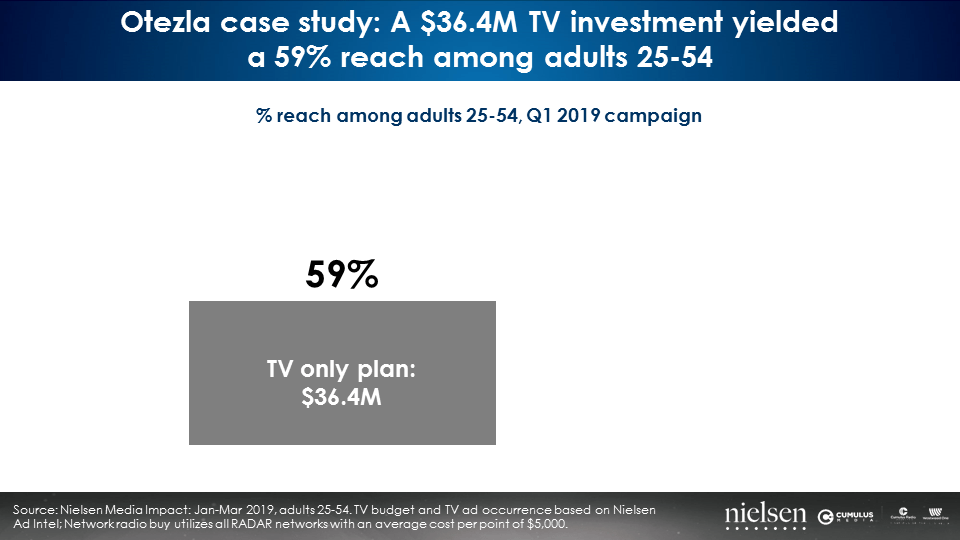
When 20% of the TV media plan is reallocated to AM/FM radio using Nielsen Media Impact, reach soars from 59% to 90%, a +53% increase in reach for the same budget.
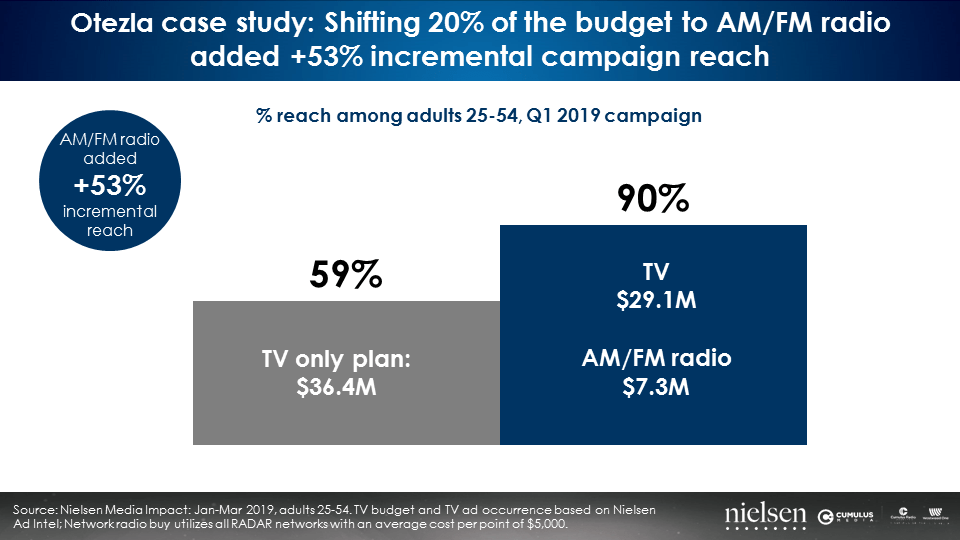
Signal Hill Insights: Disclaimers in pharmaceutical AM/FM radio ads are not a deterrent
One of the historical reasons that AM/FM radio has not been considered for pharmaceutical plans is the perception that lengthy disclaimers could be a negative for the listener. Conversely, for TV ads it is believed that when the disclaimers are running viewers are distracted by the visual.
The myth of pharmaceutical audio disclaimers being a listener turnoff was shattered by a just-released study by Toronto-based Signal Hill Insights. In the study, a large group of consumers was exposed to a 60-second pharmaceutical AM/FM radio ad with a disclaimer. The outcome showed there were no issues with the disclaimer.
Less than 8% said they disliked the AM/FM radio ad either somewhat or a lot. Those suffering from the disease symptoms rated the AM/FM radio ad strongly for likeability with very low negative scores.
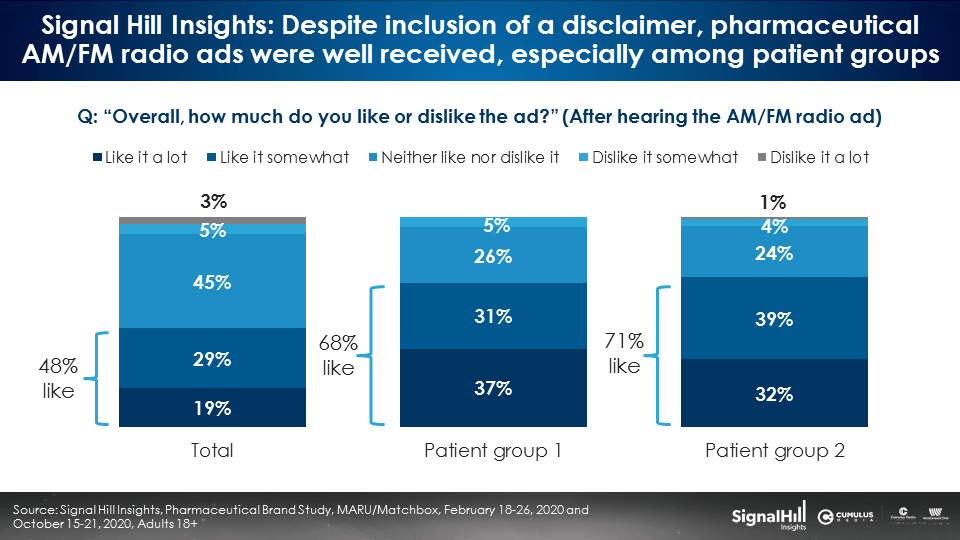
AM/FM radio builds pharmaceutical brands and drives business outcomes
Over the last two years, CUMULUS MEDIA | Westwood One has published three pharmaceutical case studies documenting how AM/FM radio campaigns generate strong impact:
- A “takeover” of 173 Cumulus AM/FM radio stations across 77 markets drove lift in upper- and mid-funnel brand measures
- A yearlong pharmaceutical brand campaign generated significant growth in brand equity
- A new pharmaceutical brand launched successfully using AM/FM radio despite the pandemic
Signal Hill Insights: A yearlong AM/FM radio campaign lifted brand equity and actions taken for a pharmaceutical brand
Our latest case study involves a pharmaceutical brand that ran a campaign through most of 2020 on U.S. network radio. To quantify the impact of the entire AM/FM radio campaign, CUMULUS MEDIA | Westwood One retained Signal Hill Insights to conduct a campaign effect study of 3,069 U.S. adults. 1,497 consumers were surveyed in February 2020 at the start of the campaign and 1,572 consumers were surveyed in October 2020 at the end of the flight.
AM/FM radio was an ideal media for the pharmaceutical brand as those with symptoms were more likely to be heavy AM/FM radio listeners
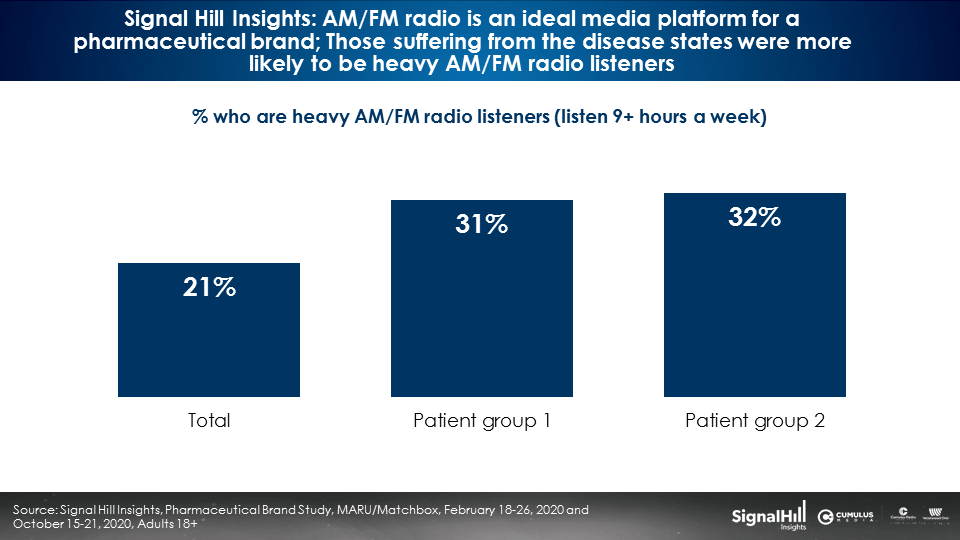
The AM/FM radio campaign generated brand equity growth
The comparison of the February and October studies revealed strong lift in brand equity among heavy AM/FM radio listeners who frequently listen to the AM/FM radio programming formats featured in the campaign.
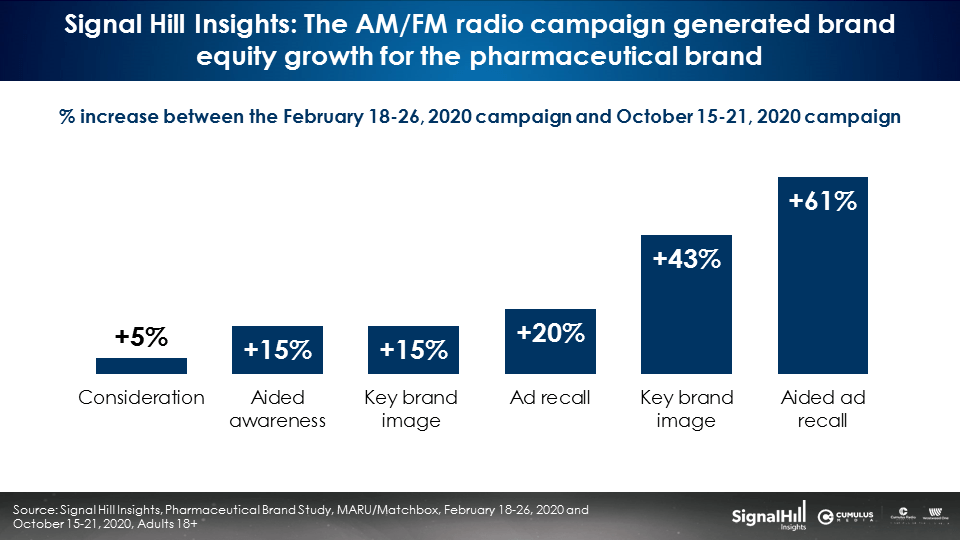
The AM/FM radio campaign led to online research and physician conversation
After exposure to the AM/FM radio ad, consumers suffering from the condition indicated they would be very likely to visit the pharmaceutical brand’s website and research symptom medications. About a quarter of listeners said they were likely to speak to their physician about the brand.
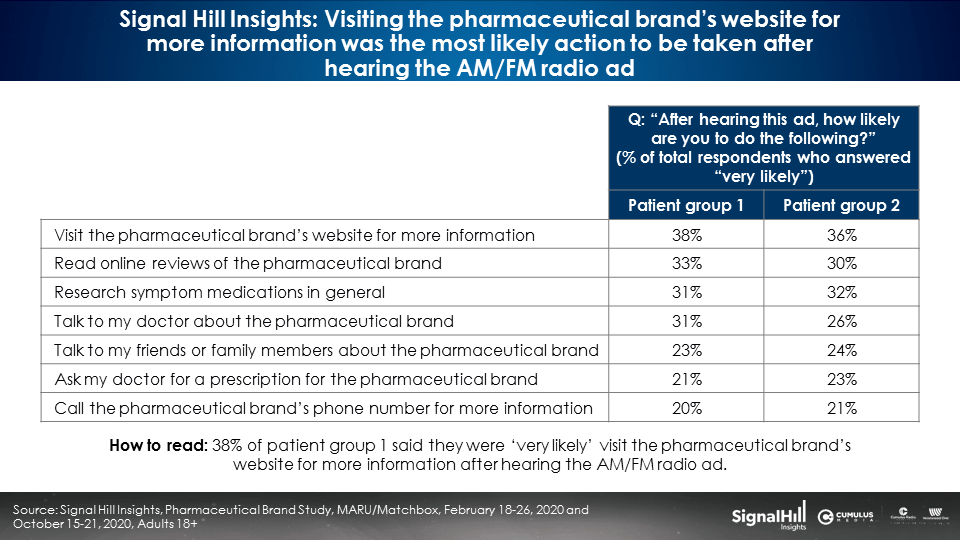
ABX: Pharmaceutical AM/FM radio ads tested at 90% of the impact of TV ads for one-fifth of the CPM
ABX, one of the leaders in creative testing, recently tested nine TV ads. Four were from a blockbuster rheumatoid/psoriatic arthritis drug and five were from a second pharmaceutical brand. ABX used the audio tracks from each TV ad and tested them as AM/FM radio ads. The four blockbuster rheumatoid/psoriatic arthritis drug AM/FM radio ads tested nearly the same as the TV ads using ABX’s rigorous creative evaluation.
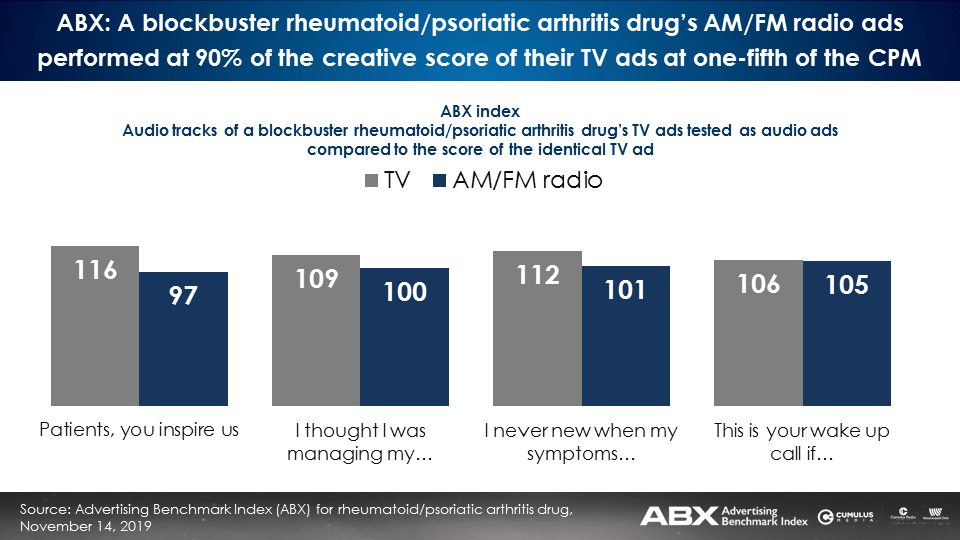
The five additional pharmaceutical AM/FM radio ads also tested almost as well as the TV ads.
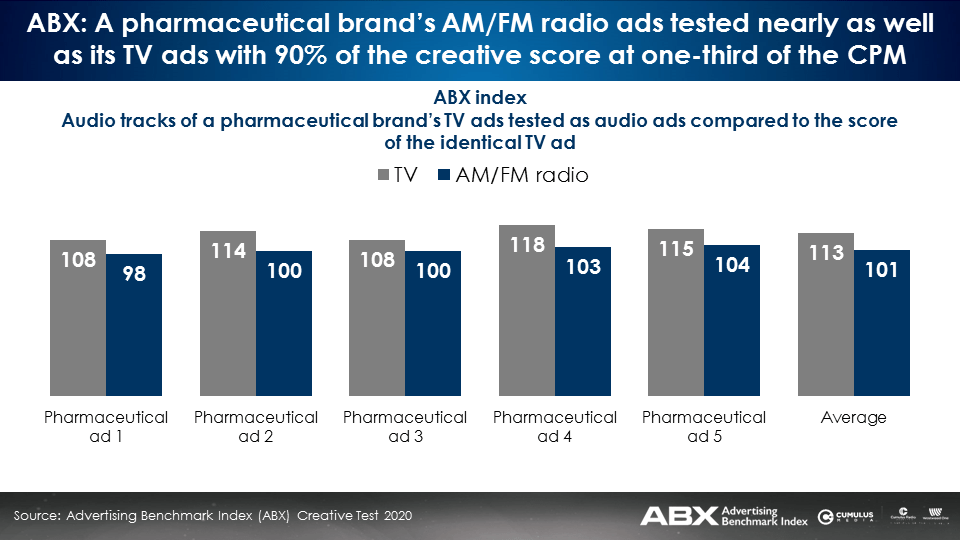
Gardening in slow motion: Audio does all the heavy lifting for pharmaceutical while TV visuals fill time
The vast majority of pharmaceutical TV ads show people going about generic daily activities in slow motion. How many pharmaceutical ads have people gardening in slow motion? Dancing, hugging children, cooking, walking and aimlessly pointing into the distance – all in slow motion. The visual has nothing to do with the audio. The visual just fills the time.
Explaining the disease symptoms, how the medication can help, and all the side effects and risks associated falls to the audio. It is no wonder that AM/FM radio ads test just about as well as the TV ads. The only element missing from AM/FM radio ads is slow motion.
Key takeaways:
- Adding AM/FM radio to the pharmaceutical media plan generates substantial lifts in campaign reach according to Nielsen Media Impact
- Disclaimers in pharmaceutical AM/FM radio ads are not a consumer deterrent contrary to industry perception based on a Signal Hill Insights study
- Three previous case studies document AM/FM radio’s ability to generate strong brand lift for pharmaceutical brands
- AM/FM radio was an ideal media platform for a pharmaceutical brand as those who suffered from disease symptoms were more likely to be heavy AM/FM radio listeners
- The AM/FM radio campaign that ran throughout 2020 resulted in a lift in brand awareness, consideration, brand perceptions, and likelihood to take action
- Pharmaceutical AM/FM radio ads tested at 90% of the impact of TV ads for one-fifth of the CPM
Pierre Bouvard is Chief Insights Officer at CUMULUS MEDIA | Westwood One.
Contact the Insights team at CorpMarketing@westwoodone.com.